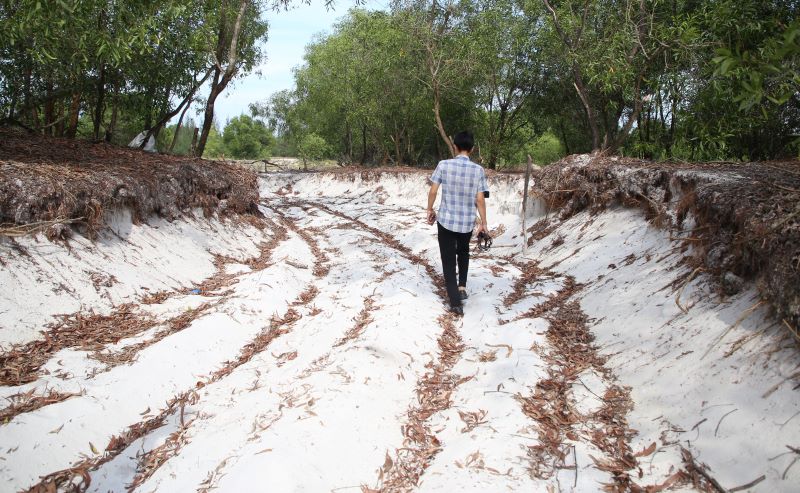Phong Dien - How White Sand is Reviving this land

Phong Dien – A Once “Barren Land” Revealed as a Hidden Gold Mine
For years, Phong Dien (Hue) has been perceived as a barren, sandy land where nothing valuable could grow. The scorching sun, infertile white sand, and erratic weather made it seem unsuitable for agriculture. Locals mostly relied on hardy crops such as cassava, sweet potatoes, watermelon, chili, and Melaleuca trees. Among them, only Melaleuca oil and Hue chili stood out—emerging as regional specialties with high usage value and export potential.
Melaleuca Oil – Centuries of Prestige and Proven Effectiveness
Hue Melaleuca oil has enjoyed a reputation spanning over 300 years, once even listed among tribute goods for the imperial court. Today, it remains an essential household remedy, especially for mothers with newborns.
Its key component, Cineol, has potent antibacterial and antifungal properties. When applied to a baby’s belly, it stimulates blood circulation and intestinal movement, relieving bloating and indigestion. In Vietnam, if it’s for babies, it has to be Hue Melaleuca oil—a non-negotiable for most mothers.
Hue Chili
From this sandy soil also comes the famous Hue chili—a prized crop across the country. Not just for its yield, but for its distinct flavor: fragrant, mildly spicy with a sweet aftertaste. Whether used fresh, pickled, or as a dipping sauce ingredient, it adds flavor depth that’s hard to replicate. In many ways, it’s seen as Vietnam’s own version of Jalapeño. And it is transported and sold across Vietnam as a regional delicacy
Image 1: Architectural Structures That Require Ultra-Clear Glass
Discover a captivating journey through Hue Charm -Chinese Assembly Halls in Huế
.jpg)
From Worthless Sand to Strategic Resource
The region, once dismissed for its dry, white sandy soil and extreme climate—with dry seasons lasting months without rain and monsoon seasons flooding nonstop—is now proving to be a perfect environment for:
- Cultivating Hue chili and Melaleuca trees, which thrive in high sunlight and humidity.
- And more surprisingly, for sand extraction and storage—thanks to its 8 months of dry weather, ideal for mining and transporting materials.
What was once considered worthless sand has now become a critical material in the high-tech manufacturing of ultra-clear glass and solar panels.
Phong Dien – Home to Southeast Asia’s Purest White Sand
Phong Dien is believed to possess one of the largest and purest white sand reserves in Southeast Asia. Its low iron and impurity content makes it exceptionally suitable for:
- Ultra-clear glass production – used in luxury buildings, shopping malls, and decorative glass, requiring exceptional clarity and light transmittance.
- High-efficiency solar panel manufacturing – which demands extremely pure silica as a base material.
Today, a single square meter of ultra-clear glass can cost anywhere from 600,000 to 1,500,000 VND (USD 25–60) depending on thickness and quality—demonstrating the immense value of what was once disregarded sand.
A land once labeled “barren” and “useless” has revealed itself to be a true hidden gold mine—from heritage products like Melaleuca oil and Hue chili to strategic resources like high-grade white sand. Phong Dien is awakening, and with the right investment and vision, it could rise as a new hub for high-value agriculture and industrial materials in Central Vietnam.
Image 2 : White Sand in Phong Dien Province



